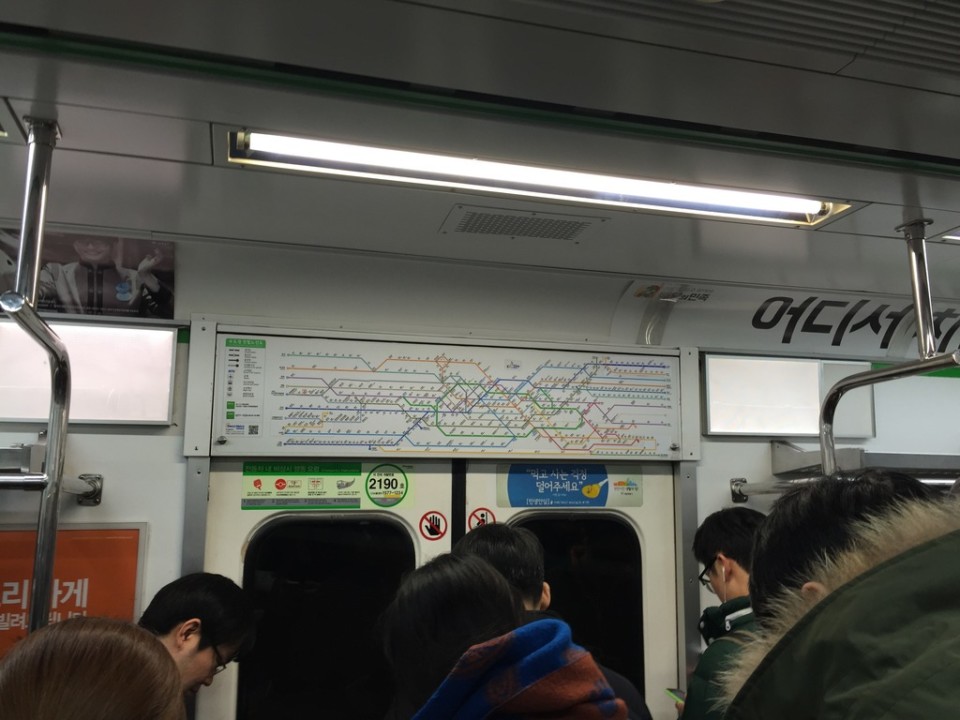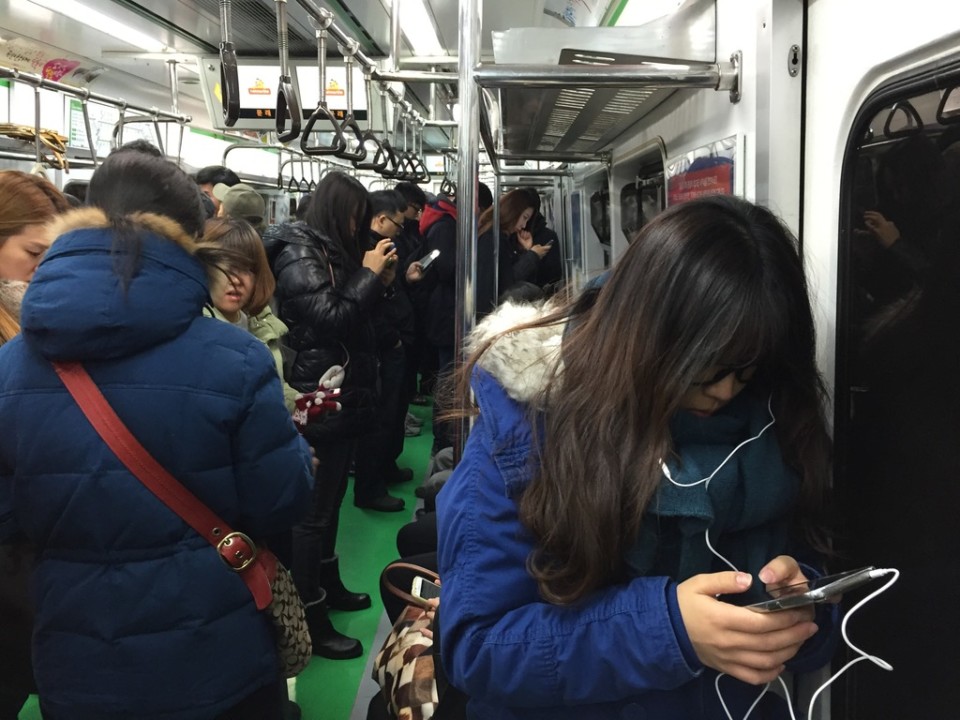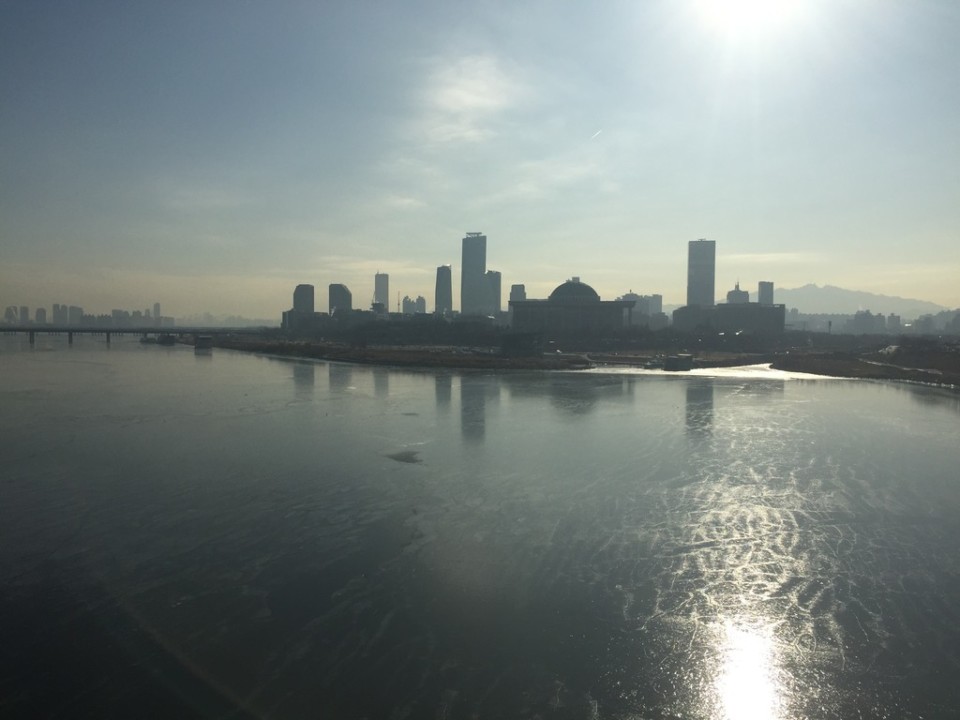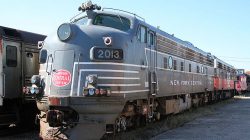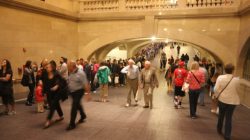After arriving from New York by way of Asiana 221, I headed straight for the light rail station at Incheon airport which will literally take you anywhere you want to go in the city.
Getting Around
I have a soft spot for efficient, economical and quick public transportation systems, and so I was instantly impressed by the ease in using the Seoul subway to get around town. The lines are well color-coded with signage available in English, Korean and Chinese. One-way adult fares usually run about $1 USD for a single ride, depending on the exchange rate that day.
System Map
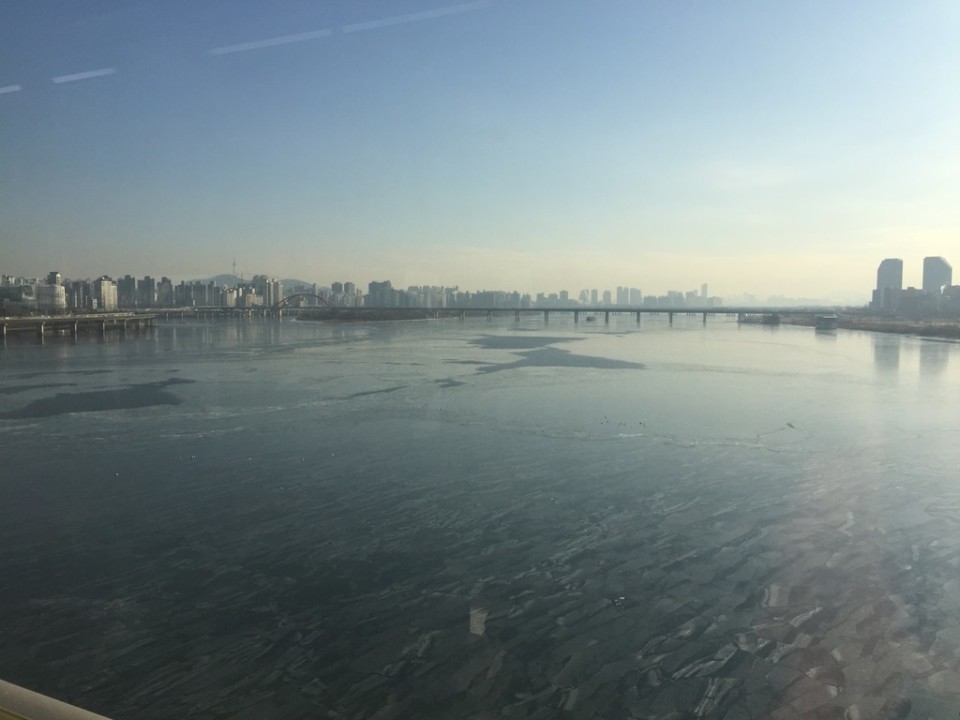
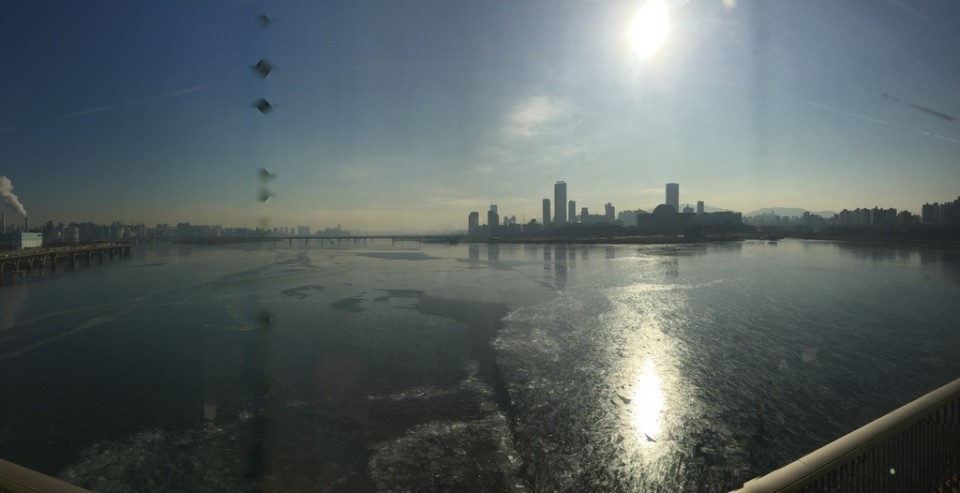
Views of the city and the Han River from the Subway line. The river, which feeds into the yellow sea, bisects the city into two halves
Lodging
I used airbnb to find a place to crash for a few nights since I knew I would be out and about exploring Seoul during most of my stay. I found an amazing review of Esther and Jim’s apartment near the Mullae station in Hongdae, which was absolutely perfect for my needs at a very affordable rate during my stay. Both of them are young, working professionals in Korea with an excellent knowledge of English and Japanese, and I had much in common with them as we all enjoy S.C.U.B.A. diving, skiing and yoga.
Esther and Jim’s apartment comes with a really comfortable bed and private bathroom for their guests, with complimentary WiFi, breakfast and TV all included. Their apartment and neighborhood reminded me a lot of the Providencia area of Santiago, Chile: high rise in a clean and safe neighborhood with fantastic views of the tall buildings against the backdrop of beautiful mountains.
Guests who book with this couple can be assured that they will receive frequent communication and updates from Esther and Jim, one of which was a VERY detailed guide to getting straight from Seoul Incheon/Gimpo airports directly to their apartment. After I booked my reservation on airbnb, Esther e-mailed me a guide, replete with pictures and directions, to walking to their place, as well as information on entering the security codes and getting into the building without relying on them being present. The apartment is super clean, cozy and well-maintained.
One of my fondest memories was returning back to the apartment one evening after exploring Seoul the entire day and having a relaxing conversation about life in South Korea over tea with Esther and Jim. They are extremely engaging, warm and hospitable people who love meeting people from all over the world and learning more about their backgrounds and culture.
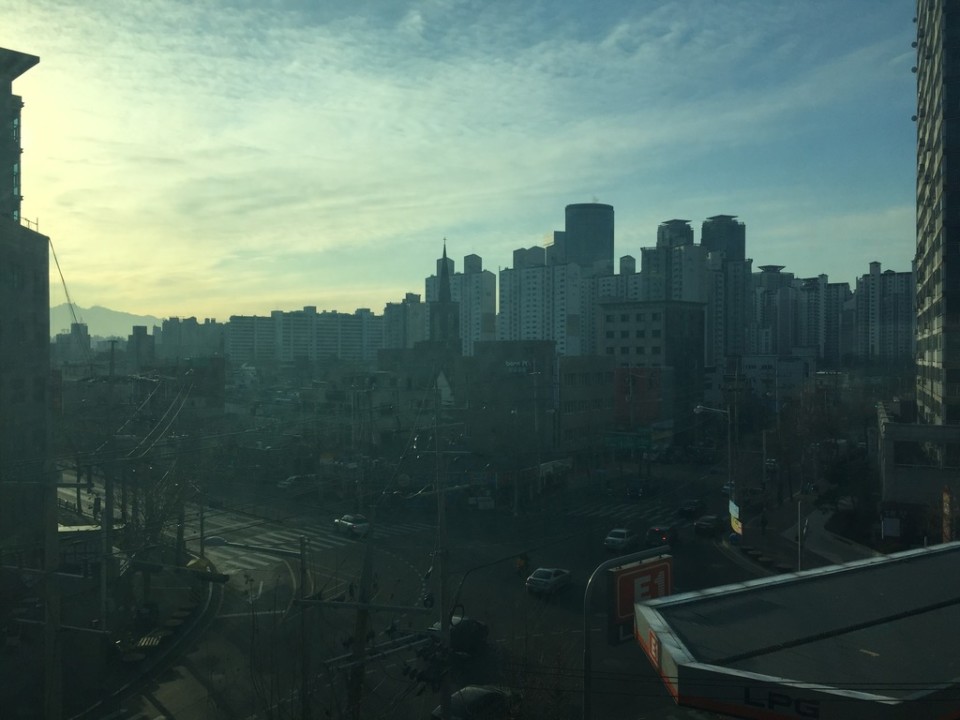
View from Esther and Jim’s in the early morning
Gyeongbokgung Palace
My first stop on my sightseeing trip was to Korea’s most famous royal palace. It is good for a full-on tour or for simply walking around (and people watching to see if you like selfie sticks). I felt that an hour walking around the beautiful grounds was sufficnet for my tastes, and the opportunity affords a great way to learn about Korean history, architecture and culture.
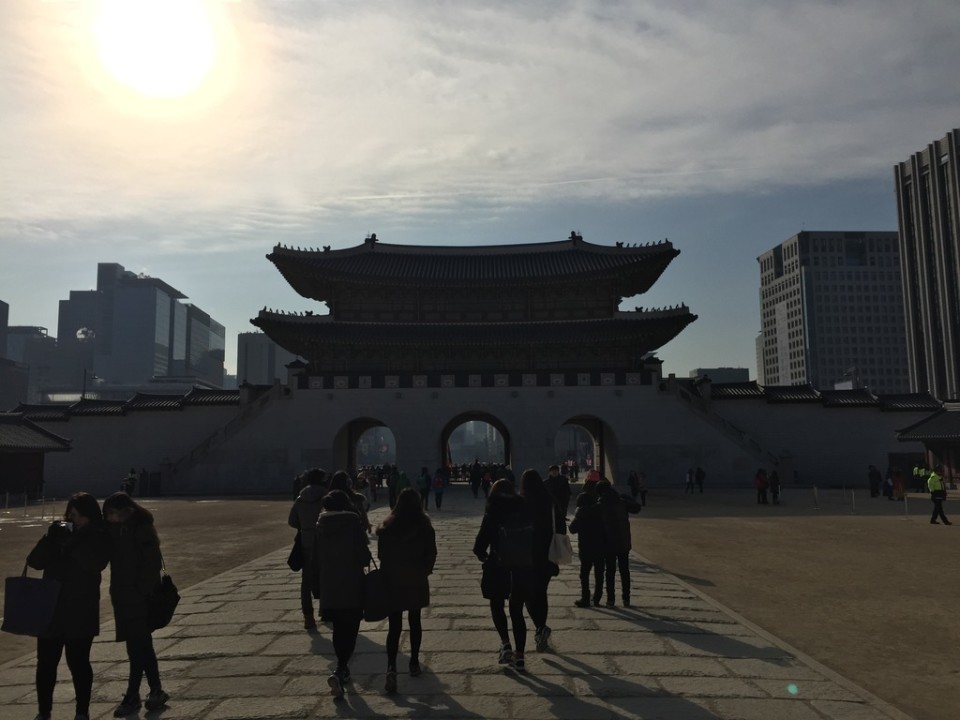
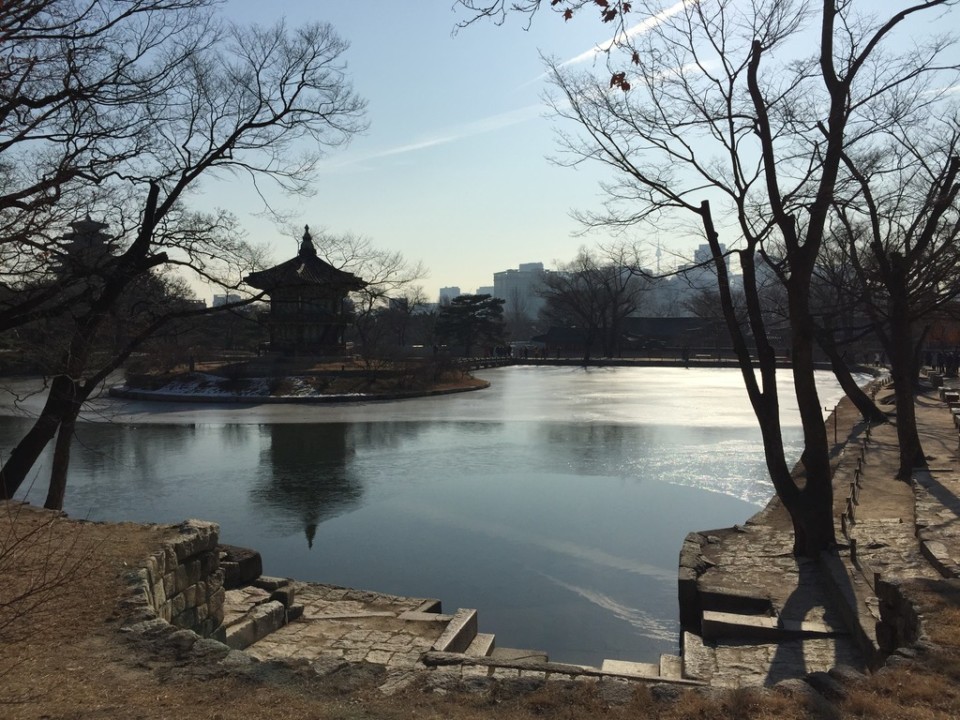
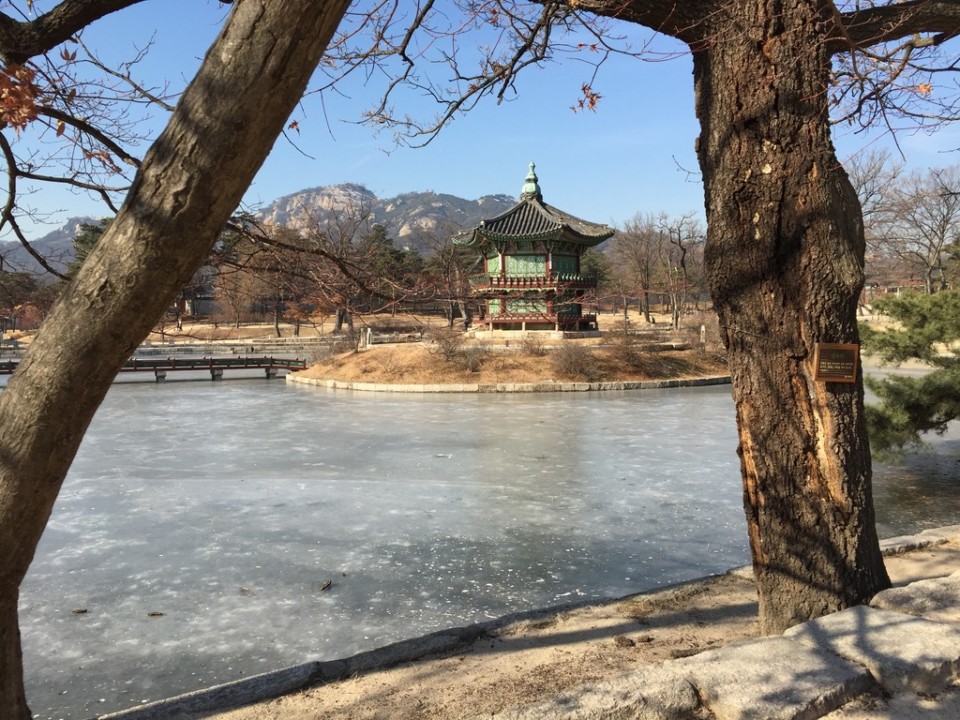
Insadong neighborhood and market
Walking distance from the palace is the Insadong neighborhod, which is renown for its antique shopping and inexpensive array of cafes and street food. I had lunch at a delicious locale featuring delicious pork and fresh vegetables.
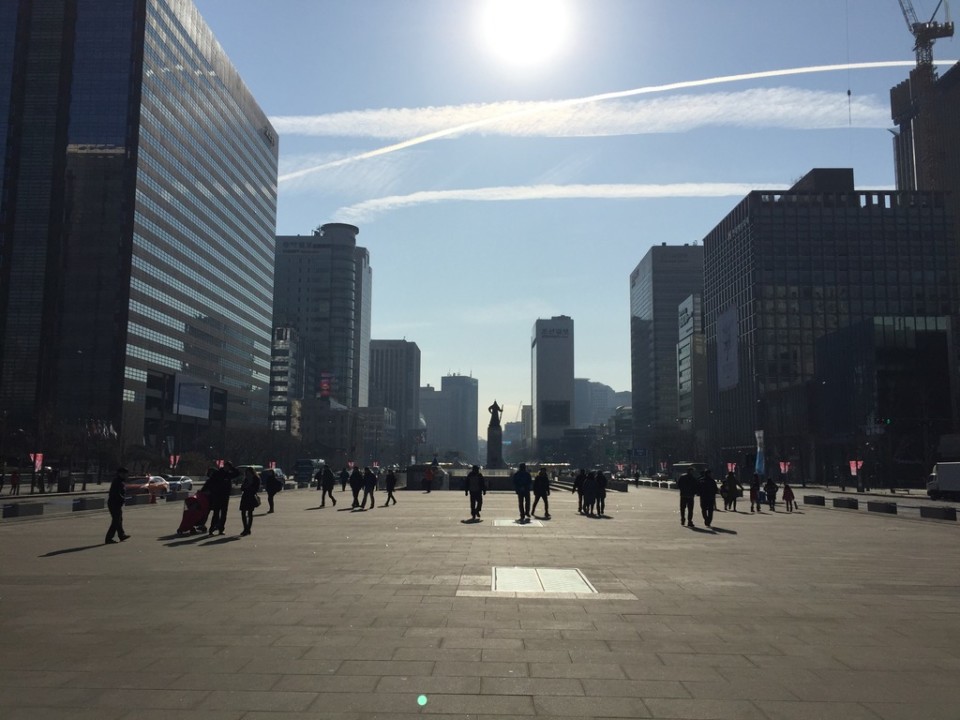
Cheonggyecheon Stream
Within mere walking distance of the above two neighborhoods is one of the most incredible memories I have of Seoul. The stream is a 7 mile river that runs through downtown Seoul. The stream was once used as a drainage system for the city, but after the Korean War, it was converted into a breeding ground for shantytowns as poorer, rural migrants came to the city.
In the early 2000’s, city officials had a vision to transform the stream into a public works project that would be eco-friendly and serve as a source of pride for Seoul. The $281 renovation project was controversial, but once completed in 2005, it has become a peaceful haven for residents. It is dug out about 15 feet below street level, but is replete with bridges, flora, fauna and waterfalls. Allegedly, when the flowers are in bloom in the spring, and then as the seasons change in the summer and fall, it is even more gorgeous than when I was there in dead of winter.
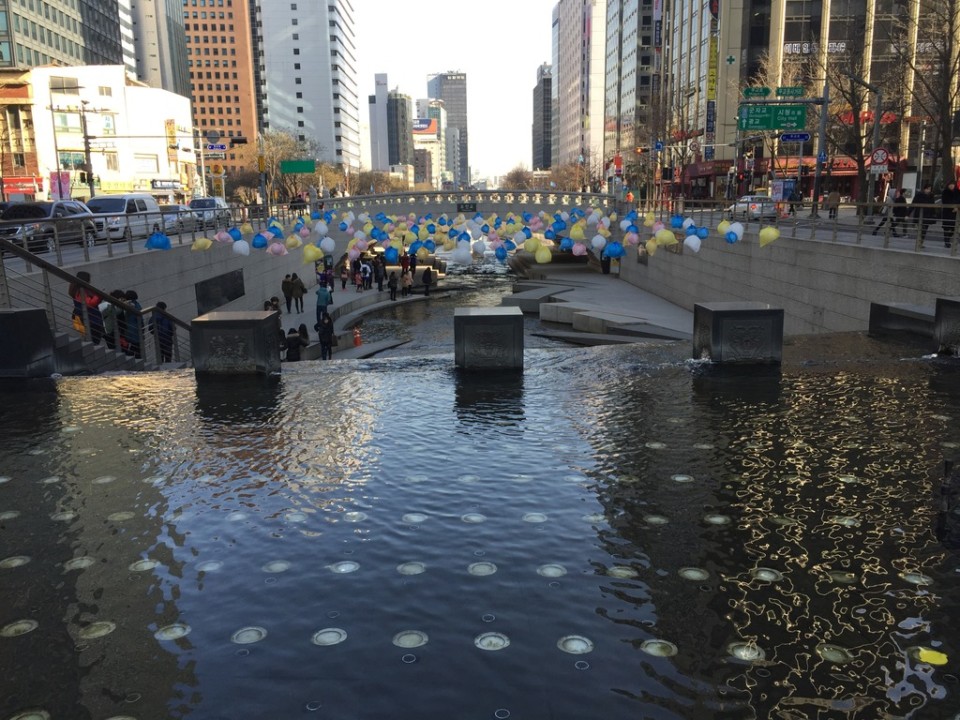
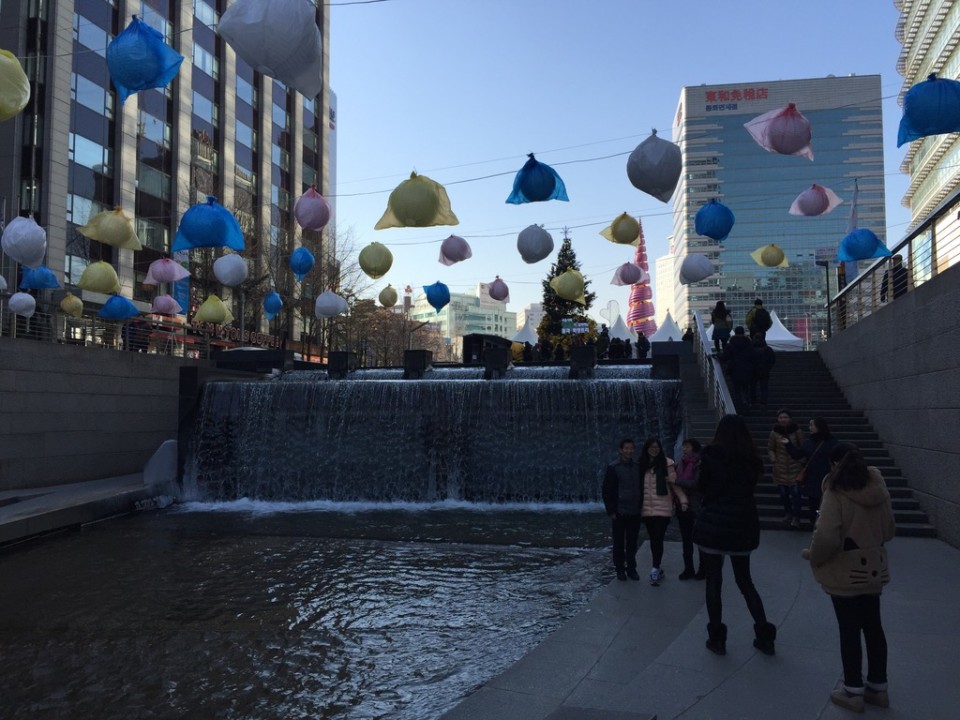
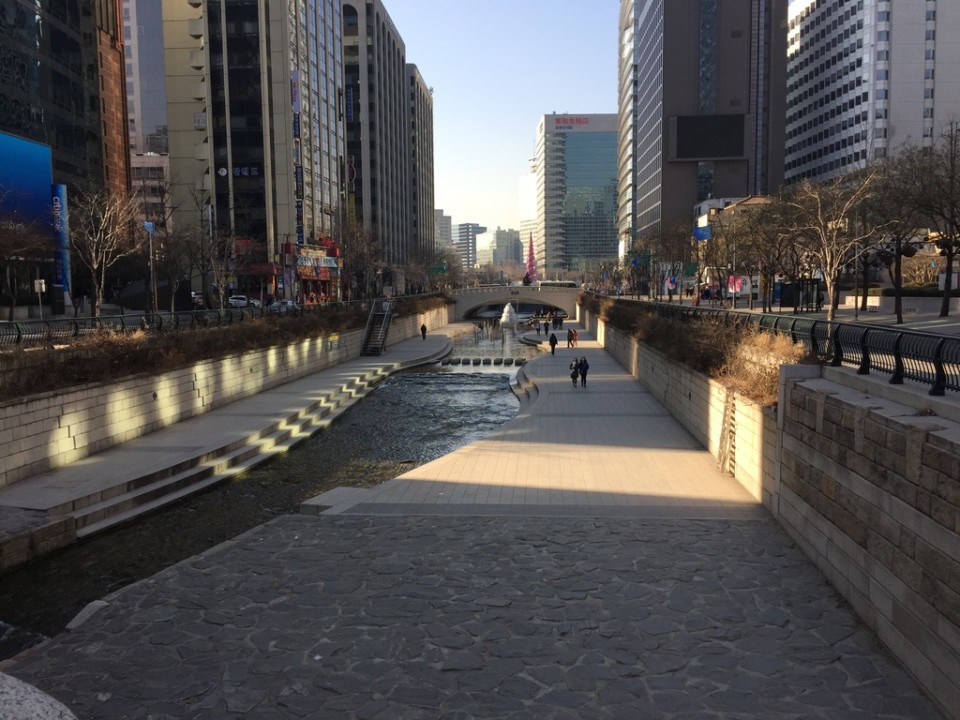
Namdaemun Market
This is the largest traditional market in Korea, and it is one of the places that you can find just about everything, especially popular Korean food items. It is a bit of a cluster, so I wouldn’t suggest going if you have claustrophobia.
Namsan
This was also one of my favorite memories of Korea, as this is a hill with a very scenic walk/hike that affords beautiful views of the city. Again, I had nostalgia of Santiago, Chile thinking it was like Cerro San Cristobal or Cerro Santa Lucia. The top of the hill can also be accessed via cable car, but what’s the fun in that? 🙂 Perched on top of the hill is the N Seoul Tower (see below).
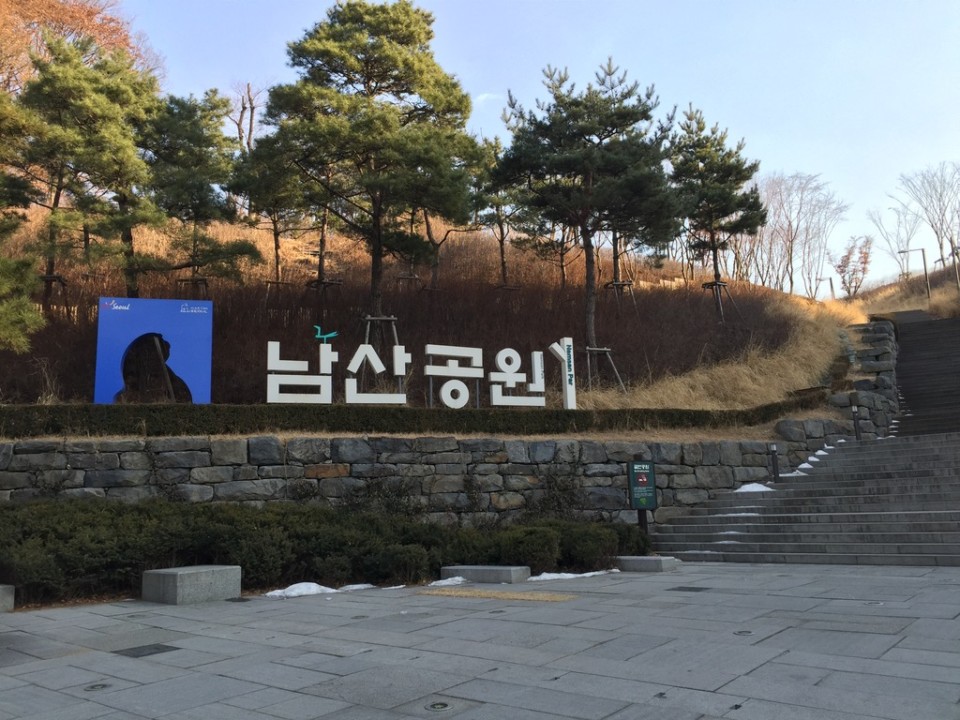
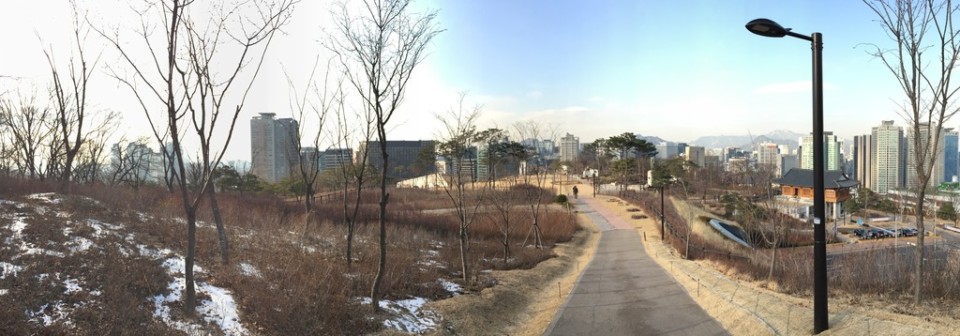
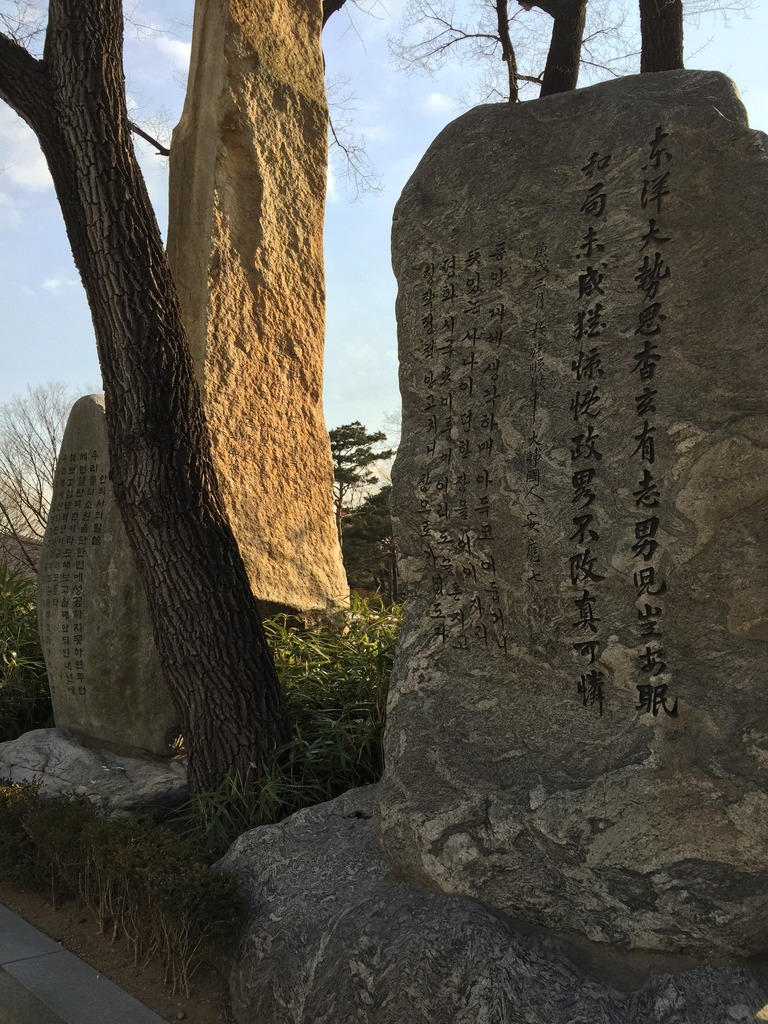
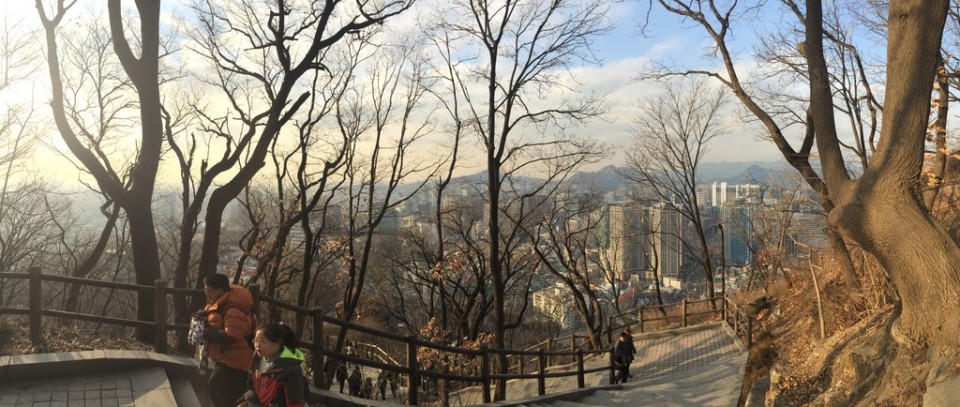
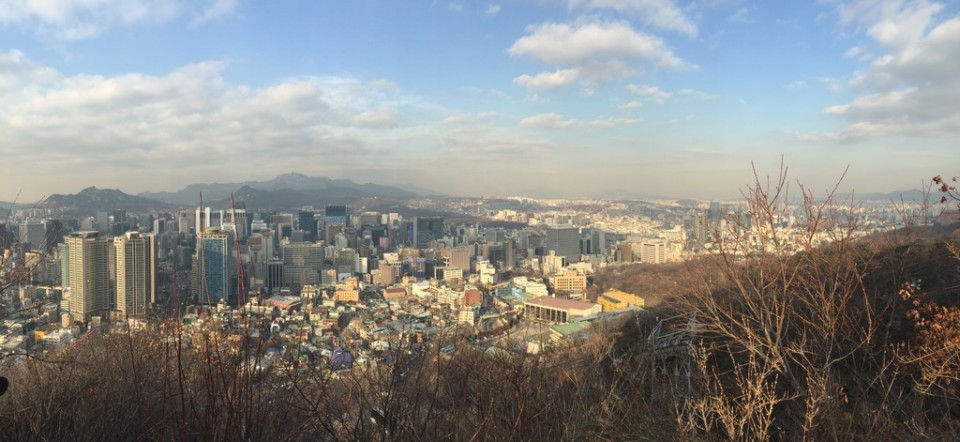
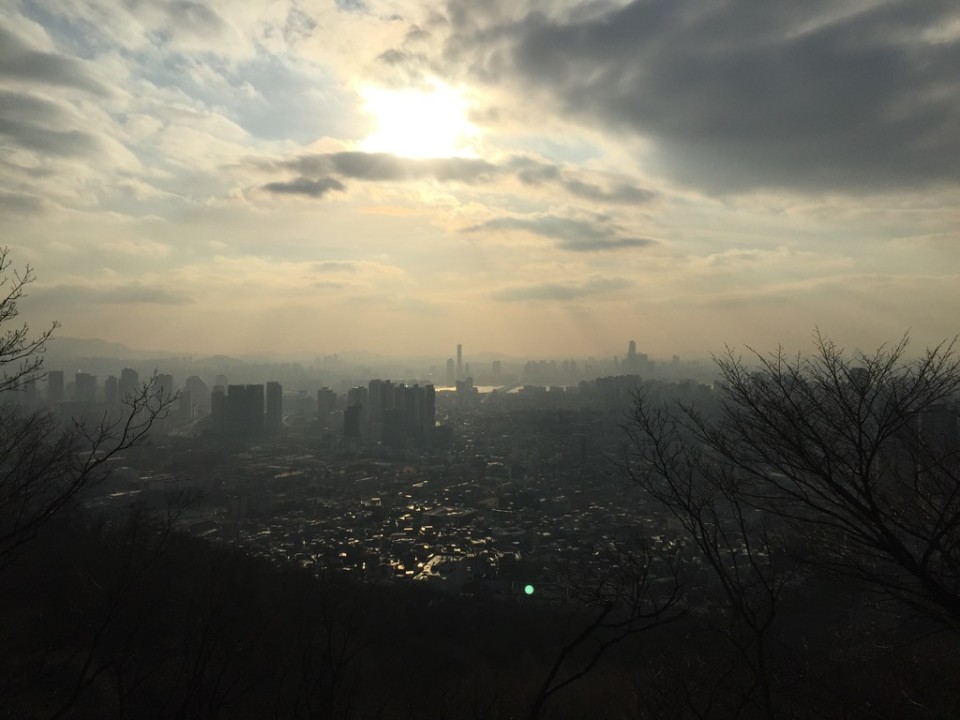
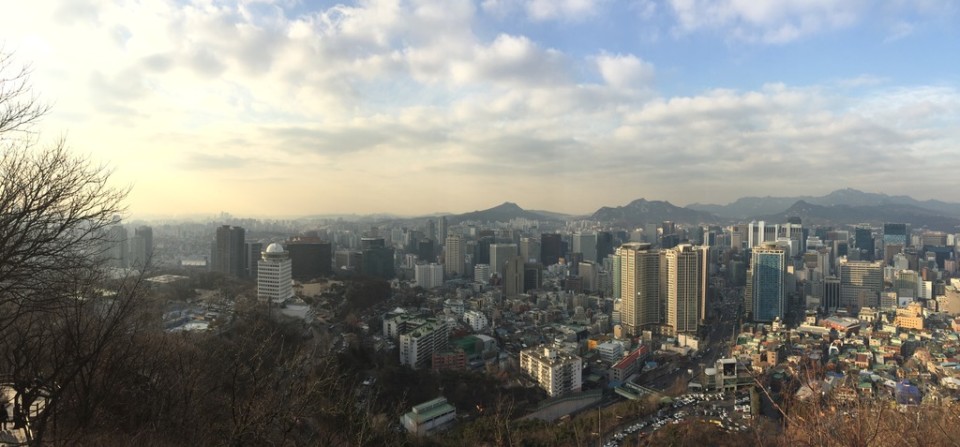
N Seoul Tower
This is one of Seoul’s most iconic and popular buildings, and sits atop of Namsan hill. It offers marvelous views of the city, and like most tall structures, it offers a fine dining restaurant at the top. The views are worth the ride up the shuttle, and the wait isn’t too bad, nothing like the Eiffle tower or Empire State building.
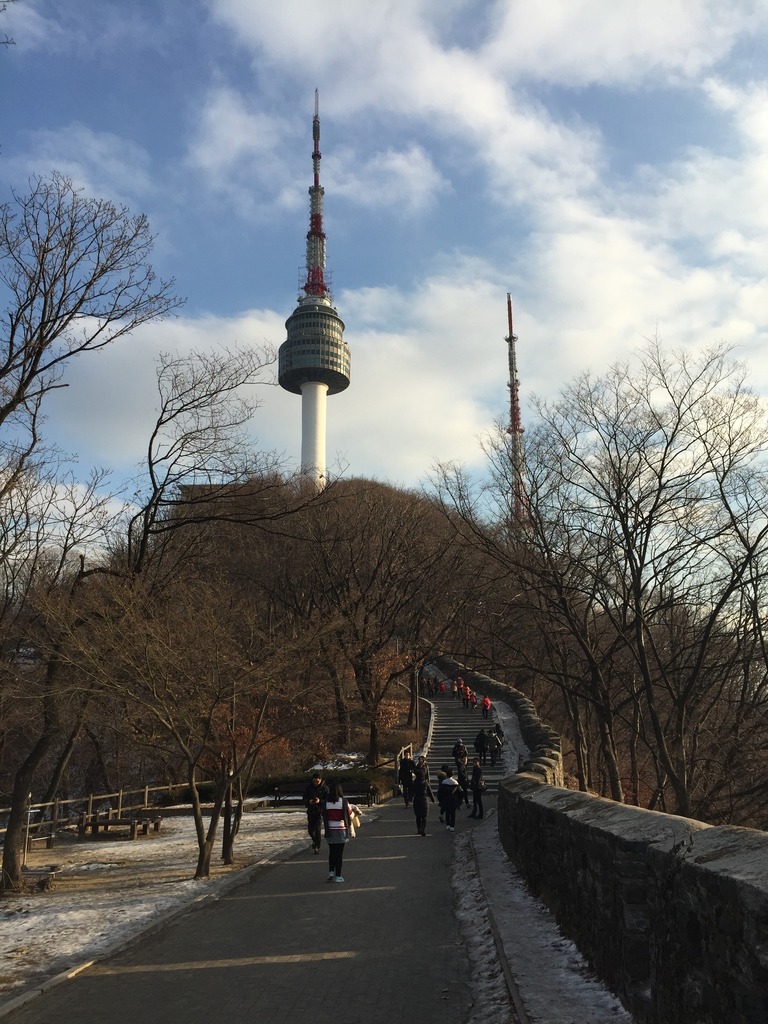
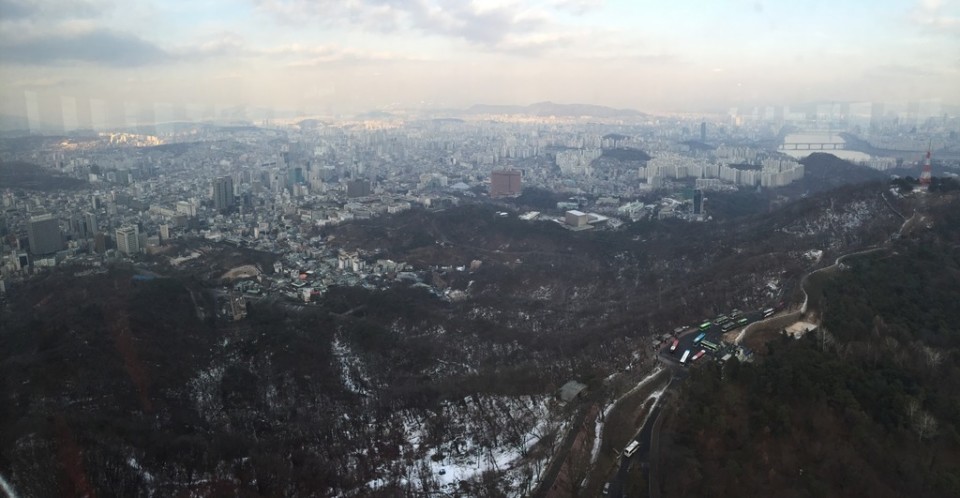
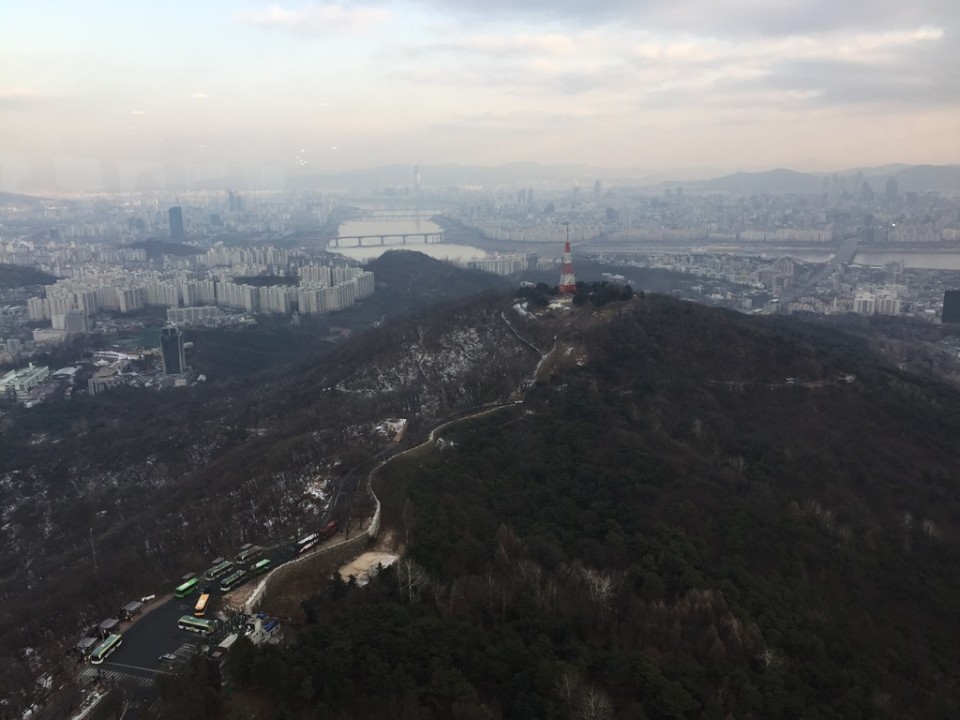
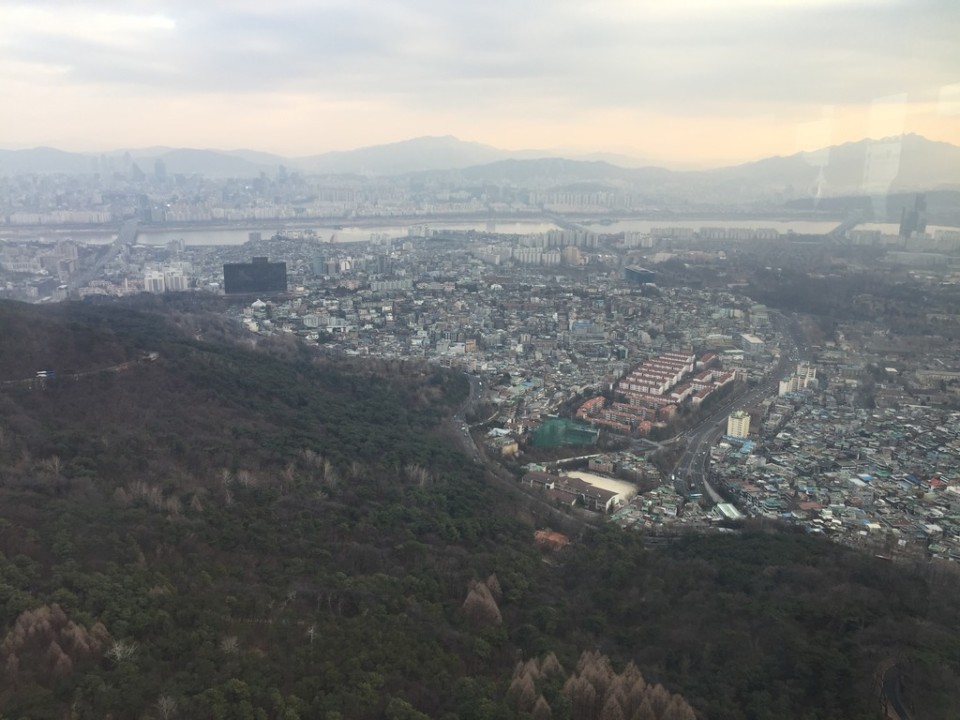
Cuisine
Korean food is simply out of this world. If you haven’t tried it yet, you are depriving yourself of some of the best cooking you will ever have. In Seoul, you can get a very inexpensive lunch sampling all types of Korean food for about $15 per person, such as japchae (noodles with beef and veggies), bibimbap, beef bulgogi, Korean style fried chicken, and of course, delicious Korean craft beer.
My favorite food advertisement, of course, was the one I saw below from good ‘ol KFC.
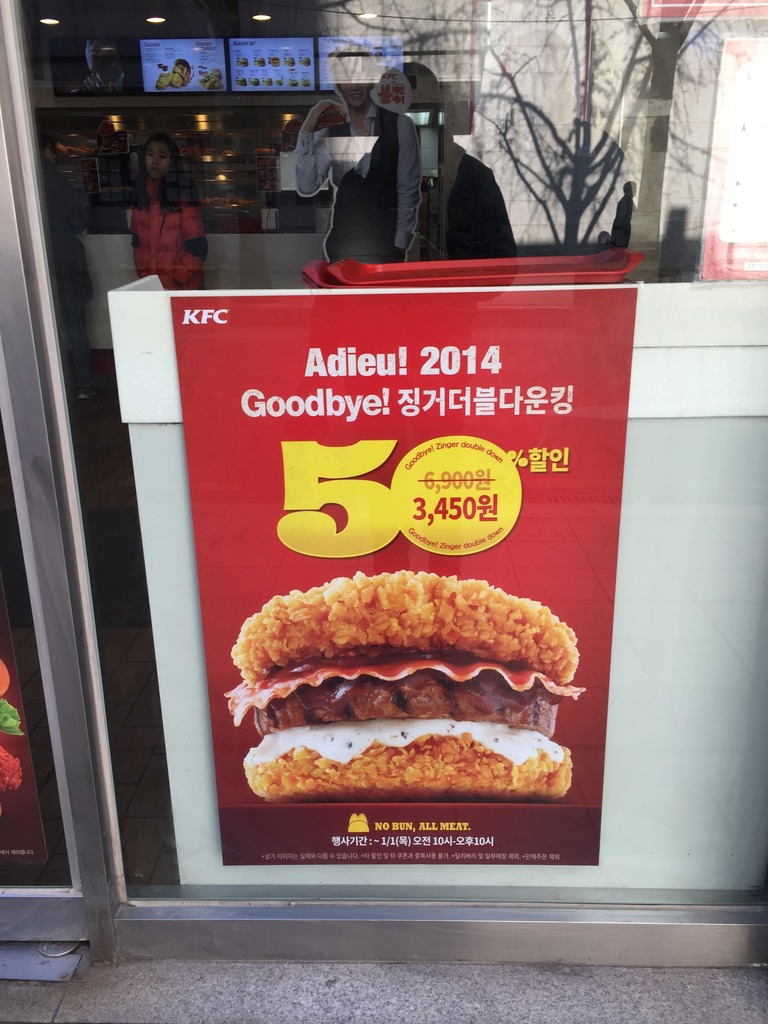
Conclusion
I wish my trip had been longer, but I felt like I left Seoul with nothing but positive vibes. The people are friendly, the culture is unique, the city is safe, easily navigable and clean, and the cuisine is delightful. I would go back in a heartbeat!

